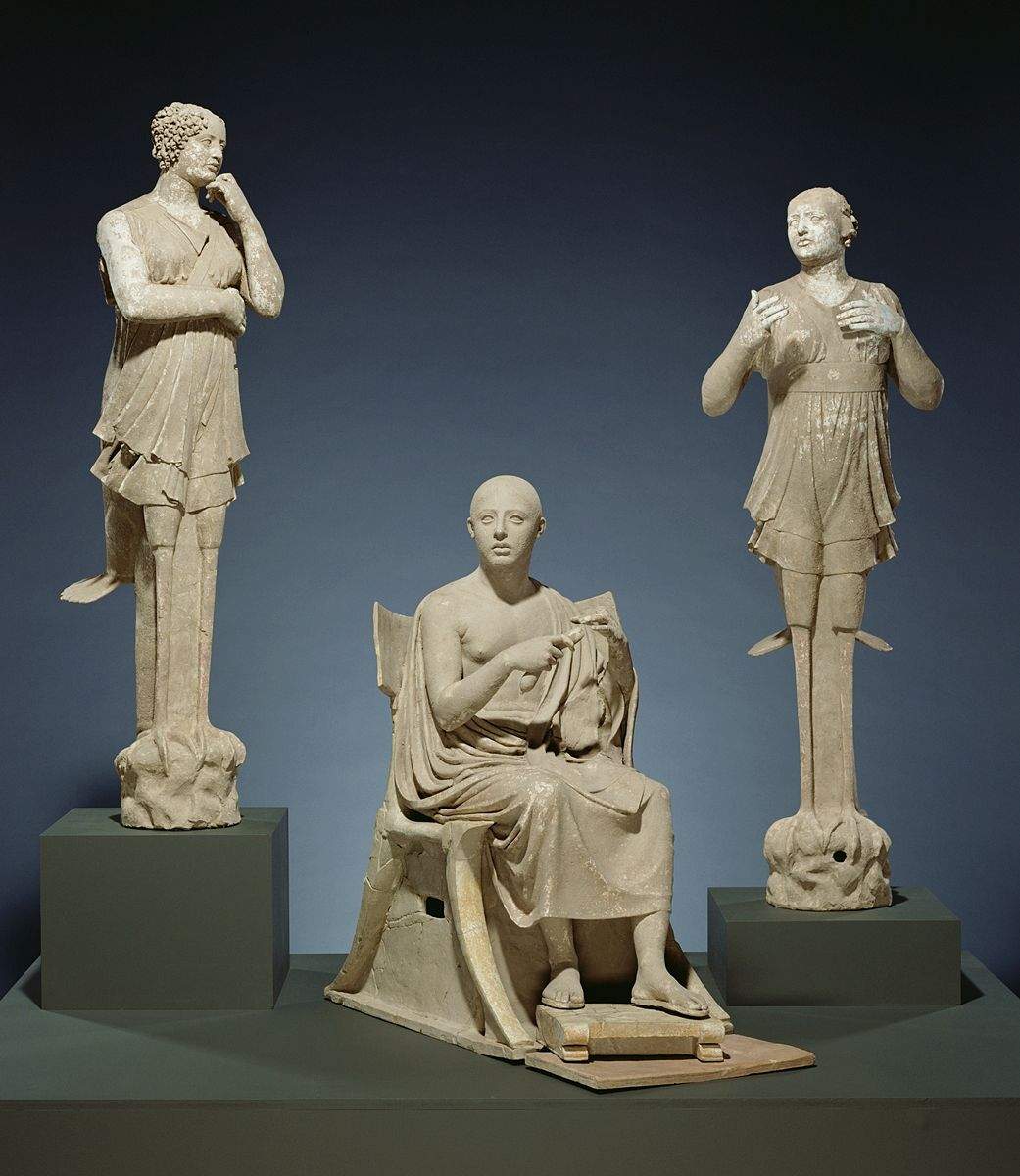Doubts are again hovering over the authenticity ofOrpheus and the Sirens, the rare Magna-Greek sculptural group from 350-300 B.C., which illegally left Italy, was purchased in Switzerland in 1976 by the Getty Museum (it is precisely on the Swiss market that it is first attested), returned to Italy in 2022, and arrived a few days ago at the National Archaeological Museum in Taranto , where it will remain on permanent display. These are not new arguments: already decades ago the idea was put forward that the group was not authentic, mainly because of the particularity of some details that are not matched in other coeval sculptures, and because of the fact that the entire group knows no equal, given also the rarity of terracotta sculptural groups. Added to this is the fact that the work was restored in the 1970s, before the Getty acquired it, in an incorrect way (for example, artificial encrustations were applied to some parts), making the appearance of the figures even stranger.
Already in the 1990s, however, some analyses ruled out the possibility that it was a fake, as Angelo Bottini and Pier Giovanni Guzzo wrote in 1993 in an article devoted precisely to the group. “Laboratory analyses,” the two archaeologists wrote, “seem [...] to demonstrate the full authenticity of the complex: it is therefore appropriate to finally accept its existence, and to try to measure up to the problems it poses.” Several analyses (thermoluminescence, X-ray fluorescence, polarized light microscopy, spectroscopic analysis of the remaining polychromy) have been performed on the work by the Getty, and according to the museum, all examinations have confirmed the authenticity of the group. In addition, comparison with decorations on Apulian ceramic finds would show that groups similar to the Orpheus and Sirens decorated monumental tombs in the Taranto area in ancient times.
The museums’ director general, archaeologist Massimo Osanna, is also leaning toward authenticity: “the traces interpreted by some as anomalous,” he told Corriere del Mezzogiorno, “probably depend on the restoration carried out in the 1970s in Switzerland where, once stolen, the group arrived in fragments. As an archaeologist, I consider the statues absolutely authentic, but I am open to debate. We know that the clay came from here, although further archaeometric investigations will not be able to tell us the precise point of origin and the exact date of making.”
Raising the doubts was, from the columns of the Bari edition of Repubblica, archaeologist Francesco D’Andria, an academician of the Lincei, who appealed to the Ministry of Culture , asking it to dispel doubts with new analyses. “Numerous archaeologists, both Italian and foreign,” D’Andria wrote, “have expressed to the writer strong reservations both about the real antiquity of the three terracotta statues and about their attribution to the art of Taranto of the fourth century B.C; the style of the works appears difficult to compare with the production of terracotta sculptures of certain Taranto origin, such as those preserved at the MarTa; moreover, Orpheus, in the images of the Taranto red-figure vases, is always represented in oriental dress, wearing a Phrygian cap.”
Analyses, Hosanna announced, will be of two types. Meanwhile, there will be research on the documents to get as much information as possible about the context of the find and to trace the steps that brought the work to the market, as well as to know its possible provenance. Then there will also be new diagnostic investigations: “We will do all the possible analyses,” Osanna told the Bari edition of Repubblica, again, “to advance the research.” It has not yet been determined where they will be conducted: Osanna only anticipated that a special research group will be formed. All this, however, it is understood, will be done regardless of the doubts, because the intent of the Ministry is to thoroughly study the newly arrived sculptural group.
 |
| Orpheus and sirens, still doubts about authenticity. Ministry will subject the statues to studies |
Warning: the translation into English of the original Italian article was created using automatic tools. We undertake to review all articles, but we do not guarantee the total absence of inaccuracies in the translation due to the program. You can find the original by clicking on the ITA button. If you find any mistake,please contact us.